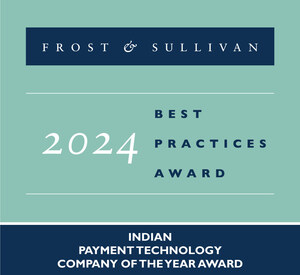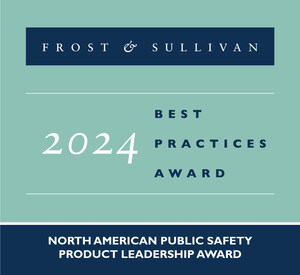Frost & Sullivan: Nanotechnology Holds Promise, but Scrutiny of the Health and Safety Issues is Required
MOUNTAIN VIEW, Calif., Jan. 4 /PRNewswire/ -- The advent of nanotechnology on the modern landscape has dramatically changed the shape, size, quality, cost, and efficiency of various applications. Nanotechnology is believed to be the most path-breaking technology, with this market expected to reach $1 trillion by 2015. The remarkable properties of the various nanomaterials have caught the attention of scientists, researchers, and manufacturers alike, and ongoing research activities are underway to harness their potential for the overall betterment of society.
(Logo: http://www.newscom.com/cgi-bin/prnh/20081117/FSLOGO)
New analysis from Frost & Sullivan (http://www.technicalinsights.frost.com), Nanotechnology--Assessment of Health Safety and Environmental Factors, finds that several research studies undertaken in the recent past have thrown up mixed results on the negative impacts of nanotechnology. The regulatory bodies in the world have started working toward the development of an extensive risk assessment model that could fit in the risk-related studies of all nanomaterials.
If you are interested in a virtual brochure for this study, send an e-mail to Sarah Saatzer, at [email protected], with your full name, company name, title, telephone number, company e-mail address, company website, city, state and country.
"As the technology is still in the nascent stages, it is vital to conduct comprehensive studies on human health, workers' safety and environmental (HSE) aspects," notes Technical Insights Research Analyst Rajaram Vijayan. "Several governmental, non-governmental, private, and non-profit organizations have been collaborating with various research entities and academia across the globe to assess the risks involved in nanotechnology."
HSE studies would enable improved understanding of the true nature of this technology, and enhance living conditions.
The commercialization of any technology depends on a comprehensive study of the lifecycle assessment (LCA) of the manufactured products in order to examine its plausible negative effects on humans and the environment. LCA studies will pave way for the development of solutions to counter the negative aspects of these products. Although all materials have been tested and standardized by the various governing or regulatory bodies, the size ranges of engineered nanomaterials have made it difficult for the existing systems to test the physico-chemical characteristics of nanoparticles.
"The understanding of the behavior of particles in nano-scale range is not as coherent as that of the same particles in the micro- and macro- scale," says Vijayan. "Experts are already confounded with the behavior characteristics of nano-materials and have found it difficult to furnish a reference material for the same."
Reference material is usually categorized based on the unique physical as well as chemical properties, and the task is made more complex as all the testing and measurement instruments and systems' work is based on reference material.
Going forward, the abundant investments intended for the nanotechnology development stimulus package are expected to strengthen the research emphasis on the HSE aspect of nanotechnology. The initiatives taken by the European and American regulatory councils in identifying the presumed toxic nature of the nanoparticles and their subsequent assessment has received a major boost since the announcement of various stimulus packages.
Rigorous and sustained research will now be possible in developing risk assessment strategies for various engineered nanoparticles due to the availability of funds. Ratcheted up interest levels in the technology will see the rollout of green and cost-effective solutions, ensuring that employment opportunities will proliferate in the realms of research, manufacturing, and distribution systems. Nanotechnology has carved a niche for itself in various applications with the different enterprises engaged in building a strong customer base. Diversification into new markets is a major goal for these enterprises, and sustained investment efforts will surely tilt the scales in favor of nanotechnology.
Nanotechnology--Assessment of Health Safety and Environmental Factors, a part of the Technical Insights subscription, provides an overview of the efforts involved in understanding the potential risks of nanomaterials and nanotechnology. It examines the required guidelines in order to meet the future regulations. Further, this research service includes detailed technology analysis and industry trends evaluated following extensive interviews with market participants.
Technical Insights is an international technology analysis business that produces a variety of technical news alerts, newsletters, and research services.
About Frost & Sullivan
Frost & Sullivan, the Growth Partnership Company, enables clients to accelerate growth and achieve best-in-class positions in growth, innovation and leadership. The company's Growth Partnership Service provides the CEO and the CEO's Growth Team with disciplined research and best-practice models to drive the generation, evaluation, and implementation of powerful growth strategies. Frost & Sullivan leverages over 45 years of experience in partnering with Global 1000 companies, emerging businesses and the investment community from 40 offices on six continents. To join our Growth Partnership, please visit http://www.frost.com.
Nanotechnology--Assessment of Health Safety and Environmental Factors
D1BD
Contact:
Sarah Saatzer
Corporate Communications - North America
P: 210. 447.8427
E: [email protected]
http://www.technicalinsights.frost.com
SOURCE Frost & Sullivan
WANT YOUR COMPANY'S NEWS FEATURED ON PRNEWSWIRE.COM?
Newsrooms &
Influencers
Digital Media
Outlets
Journalists
Opted In






Share this article